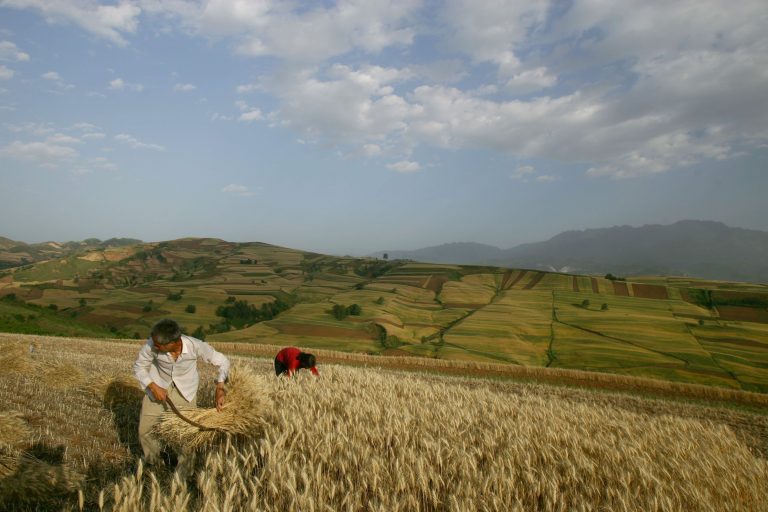On top of dealing with the worst outbreak it has seen since the beginning of the pandemic, now food security has become a growing problem in China as COVID lockdowns show no signs of easing.
The major corn-growing provinces of Jilin, Heilongjiang and Shandong are all experiencing partial lockdowns ahead of spring plowing — with some farmers deciding to abandon their crops altogether.
Driven by the highly transmissible Omicron variant, authorities in China have enacted some of the strictest COVID lockdowns yet. Most recently, the financial capital of Shanghai has recorded the bulk of cases, with the city reporting over 9,000 cases each day starting in April, and locked down residents told they would have to remain inside their homes for even longer as cases continue to rise.
MORE ON CHINA’S CORONAVIRUS SITUATION:
- Over 2,000 Chinese Military Personnel Deploy to Shanghai Amid Worsening COVID Situation
- China Builds Six COVID Hospitals in Jilin Province, 6,000 Students Locked Down Within School Campus
- Shanghai Begins Second Stage of Citywide Lockdown, Panicked Residents Empty Supermarkets
South China Morning Post (SCMP) reported that in some parts of Jilin Province, such as Lishu county — an important corn production area that Chinese leader Xi Jinping inspected last year — crop-straws from the previous harvest are everywhere because farmers have not been allowed to leave their homes due to COVID regulations.
Success
You are now signed up for our newsletter
Success
Check your email to complete sign up
The road vehicle freight flow index for Jilin city — which gauges the number of trucks passing through a specific region — was recorded at 16.12 on April 1, dropping by 86.7 percent compared to the same period last year, according to Wind data.
Jilin farmer: ‘No one is allowed to go out’
A farmer surnamed Dong said his family’s 5-acre corn field in Lishu had essentially gone to waste because they were not allowed to leave their homes in order to prepare the soil for this season’s planting.
“There are crop-straws all over the fields now,” said Dong, “It is impossible to plant the seeds.”
Dong explained that farmers would normally be “stubble-cleaning, ridging and fertilizing to prepare for seeding at the beginning of May,” but because of China’s stringent COVID regulations, the farmers were forced to stay put and are now way behind schedule.
“Now no one is allowed to go out,” he said. “And the agricultural stores have no seeds and fertilizers. Even if they have, farmers can’t go out to buy them,” Dong told SCMP.
Jilin under lockdown
Last month, Jilin Province was hit hard by a new wave of COVID-19. The situation was escalating so rapidly that authorities there built six makeshift hospitals to try and counteract the rise in new cases and hospitalizations on March 12.
Five hospitals were built in Jilin city, the most impacted area, and one in the capital of Changchun, said Zhang Li, deputy director of Jilin’s provincial health commission. Along with seven medical institutions allocated to critical patients, there were also over 20,000 beds available for COVID patients within the province.
State-run media reported 2,472 new locally transmitted cases in Jilin on April 4, of which 2,076 were reported to have originated in the province, the National Health Commission said. Although the bulk of new infections has been traced back to Changchun, and Jilin city, authorities in the province have locked down all cities, counties and villages.
However, as the Chinese regime has been known to conceal accurate statistics, considerable doubt has been cast as to the veracity of these numbers, with the real number of infections speculated to be even higher.
Authorities scramble to get farmers back to work
On April 4, authorities in Jilin issued a statement announcing that farmers locked down in urban areas will be allowed to return to their hometowns to work beginning on April 5. This is provided they meet certain conditions, including a negative nucleic acid test and no close contact with anyone infected.
Chinese Vice-Premier Hu Chunhua also said on April 1 that demand for corn “outstripped supply in China at the moment” and that “the country must work together to boost output above last year.”
China is the world’s largest grain consumer and imported 28.35 million tons of corn in 2021, up 152 percent from 2020. According to customs data, Ukraine and the United States were the biggest suppliers.














